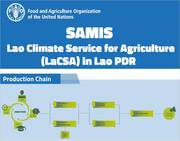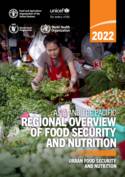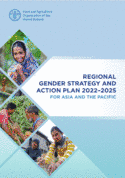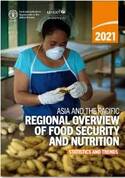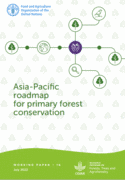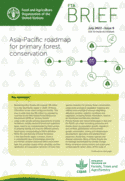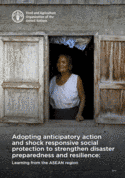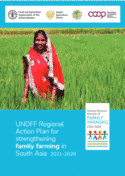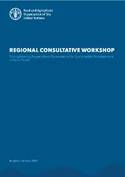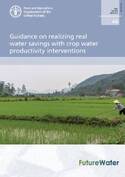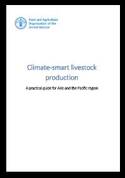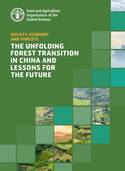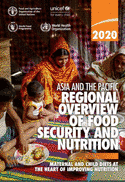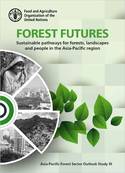New Videos
System of Rice Intensification (SRI) in Lower Mekong Basin Programme by Asian Institute of Technology
Reintegrating returning migrants for a better tomorrow
Anticipatory Action helps Bangladeshi farmers cope with extreme weather (sq)
Don’t let AMR take control!
Don’t let AMR take control!
New Publications
Regional Gender Strategy and Action Plan 2022–2025 for Asia and the Pacific
2022, 48 p.
Promoting gender equality across the policy and programme framework of the Food and Agriculture Organization of the United Nations (FAO) is crucial for the Organization to realize its mandate to eradicate poverty and eliminate hunger and malnutrition. Across the Asia-Pacific region, women are well recognized as important contributors to food production and all other aspects of food systems. However, their lives and livelihoods are being affected in unprecedented ways by persistent social and gender inequalities, climate change and the current COVID-19 pandemic.
The Regional Gender Strategy and Action Plan 2022–2025 for Asia and the Pacific translates FAO’s corporate Policy on Gender Equality 2020-2030 and gender action plan into an actionable agenda and presents the strategic and programme framework for FAO’s gender-related work in the region.
Recent Fisheries & Aquaculture books, brochures & flyers
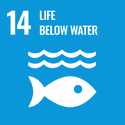
- Resilience and seizing opportunities: Small-scale fisheries and aquaculture businesses that thrived during the COVID-19 pandemic in South and Southeast Asia
- The pros and cons of cell-cultured seafood
- The growth of single-cell protein in aquafeed
- Aquaculture's next frontier
- Gene editing in aquaculture
- Defining and implementing a tilapia welfare assessment protocol in Brazil
- The rediscovered potential of seaweed dietary additives
- The rise of plant-based seafood
- The small-scale fisheries and aquaculture sector in Asia
- Small fish, huge impact
- Women and men in small-scale fisheries and aquaculture in Asia
- Extruded shrimp feeds improve performance, so why are they not more popular?
Asia-Pacific roadmap for primary forest conservation
Working Paper 16, July 2022. 189 p.
Brief, 18 p.
The purpose of the roadmap is to delineate and inform the process by which decision makers and actors can evaluate the status, diversity and trends of primary forests in the region, identify priority areas for primary forest conservation, assess the threats they face, and explore possible ways to address them.
2022, 12 p.
This regional study and four country case studies – Cambodia, Myanmar, the Philippines, and Viet Nam – found that significant progress has been made, but also uncovered some surprising and challenging questions.
COVID-19, land, natural resources, gender issues and Indigenous Peoples' rights in Asia
2022, 19 p.
This brief asks specifically what impact COVID-19 is having on Indigenous Peoples’ rights, especially women, elaborating on how challenges could be overcome leaving no one behind.
UNDFF Regional Action Plan for strengthening family farming in South Asia 2021–2028
2022, 36 p.
A joint publication of FAO, AO, SAC, AFA , COOP, this Regional Action Plan aims at facilitating and accelerating the process of developing national action plans through inclusive multi-stakeholder processes, not only putting family farmers at the centre but recognizing them as critical partners.
Low water exchange shrimp farming: improving in Thailand
2022, 8 p.
Techniques described in this brochure helped to limit the spread of pathogens and improved farm performance.
The Bhutanese resolve for change: How one farmer’s faith unlocked a village’s potential
2021, 4 p.
Here is a story of a farmer whose passion and resolve made it possible to form one of the most successful farmer groups in the country.
2021, 4 p.
This brochure summarizes data on food consumption, demography and food prices in Vanuatu.
2021, 246 p.
This book focuses on- family farming’s constraints, challenges, opportunities, and government policies to contribute on attaining the targets of Sustainable Development Goals (SDGs) at country and South Asia regional levels.
2021, 174 p.
With NACA, country assessment studies were carried out by seven national experts in seven selected countries--Cambodia, China, India, Indonesia, Malaysia, Thailand, and Viet Nam.
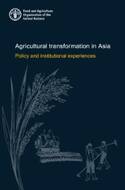
Agricultural Transformation in Asia: Policy and institutional experiences
2021, 390 p.
The main purpose of this study is to take stock of public sector experiences in facilitating and enabling agricultural transformation in selected countries in Asia. The study focuses on key public sector interventions, in particular policies, legislation and institutional innovations, because these areas have so far not been adequately researched.
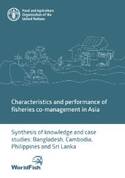
2021, 120 p.
The case studies present current evidence and experiences from the region and give an overview of co-management application and performance.
2021, 8 p.
The first national livelihood and adaptive capacity dataset in the country has been generated using an innovative method merging participatory mapping, and advanced data treatment and is, in both, technical standard and scientific innovation, state of the art.
Bridging the gap: How to get climate services to farmers
2021, 8 p.
The project tested a number of pathways to give farmers access to the Lao Climate Service for Agriculture (LaCSA): village’ public announcement systems, radio, school posters, app, TV, and Farmer Field Schools (FFS).
Guidance on realizing real water savings with crop water productivity interventions
2021, 60 p.
This FAO and Future Water publication contains clear and practical guidelines on how to implement ‘real’ water savings in agriculture through interventions for enhancing crop water productivity. A distinction is made between real water savings and ‘apparent’ water savings.
Climate-smart livestock production: A practical guide for Asia and the Pacific
2021, 50p.
Examples of CSL solutions focusing on the efficient use of natural resources include higher yields per hectare, higher water productivity, efficient use of low carbon energy, and the reduction of waste along the value chain.
2021, 44 p.
The paper provides a comprehensive assessment of the changes witnessed in the forest sector in China during the last three decades and the key drivers that have contributed to the country’s forest transition.
2021, 120 p.
The 2020 report on the State of Food Security and Nutrition in the Asia and Pacific region, provides an update on progress towards the 2030 targets (SDGs and WHA) at the regional and country level. Selected indicators look at undernourishment, food insecurity, childhood stunting, wasting and overweight, adult overweight, child minimum acceptable diet, exclusive and continued breastfeeding, and anaemia in women and children.
Rapid Assessment of the Impact of COVID-19 on Food Supply Chains in the Philippines
2021, 98 p.
This report looks at rural livelihood and agricultural market chains as a critical component of the country’s food security capacity, and the related effects to it of the community restrictions imposed due to the COVID-19 pandemic.
COVID-19 Action Sheets
- Addressing the impacts of COVID-19 in food crisis contexts
- Data for decision-making
- Economic inclusion and social protection to reduce poverty
- Boosting smallholder resilience for recovery
- Trade, intra-regional trade and food safety standards
- Preventing new pandemics in Asia and the Pacific
- Food systems transformation
The third Asia-Pacific Forest Sector Outlook Study (APFSOS III)
356 p.
Asia-Pacific's forests & landscapes are rapidly changing and a sustainable future is possible.

Dynamic development, shifting demographics and changing diets
172 p.
The story of the rapidly evolving food system in Asia and the Pacific and why it is constantly on the move.

